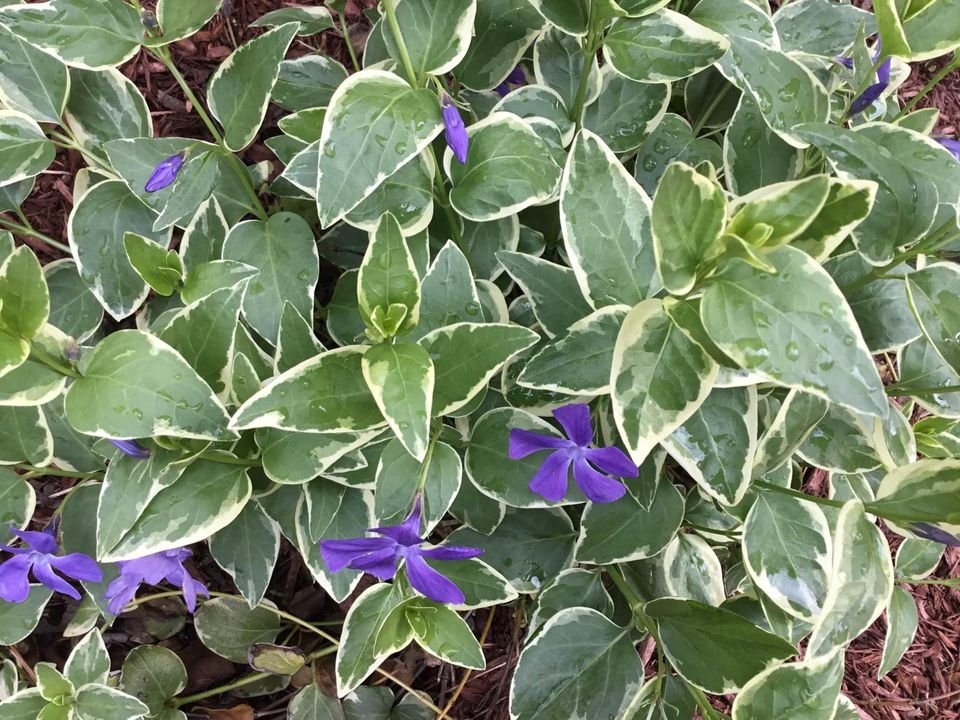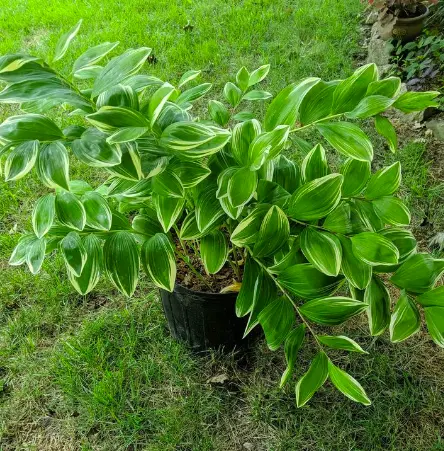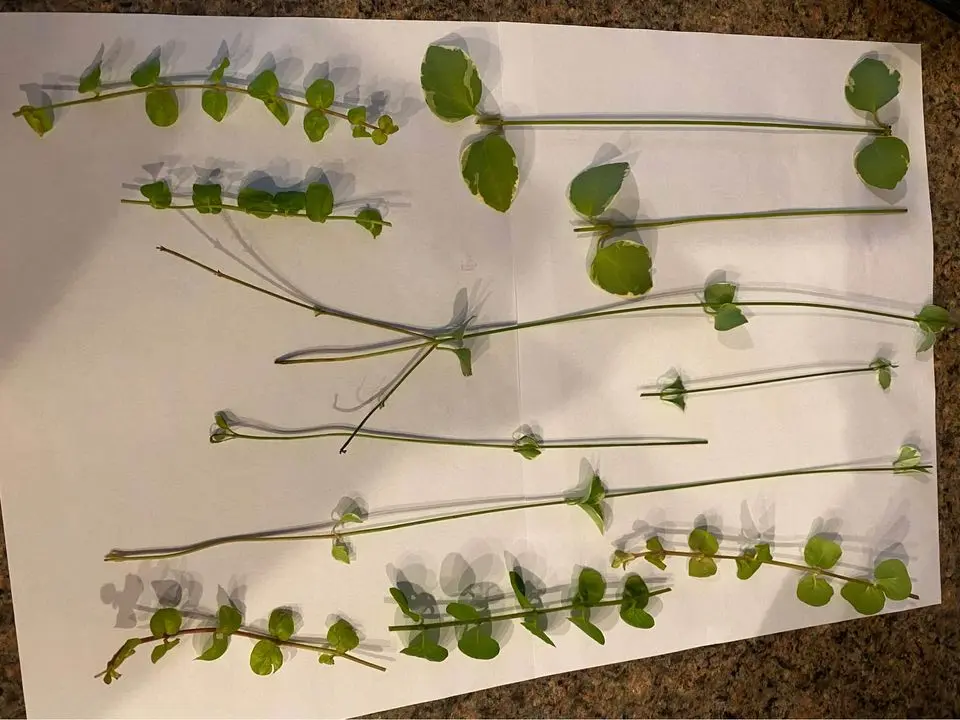Variegated vinca or periwinkle (Vinca minor) is a common sight in gardens and pots throughout homes and is as beautiful as it is popular. This unique plant comes in many different forms, and so do the growing conditions they require; some even prefer being indoor plants!
When properly cared for, your variegated vincas will flourish and be beautiful additions to your landscape design and as houseplants. Whether you want to grow your variegated vinca in full sun or partial shade, on the ground or in a pot, there are ways to ensure the plant’s success, which we’ll go over here. Let’s get started!
What is a Variegated Vinca?

Vinca, also known as periwinkle, is a flowering plant that grows in many parts of the world. One variety of vinca is called variegated vinca, with leaves with white and purple stripes. These plants grow best in full sun with well-drained soil. They are considered easy to grow in most climates but can be susceptible to pests and diseases like other houseplants.
Both varieties of vinca are commonly planted as decorative landscaping plants under trees and in other difficult places in the garden. Variegated vinca grows best in USDA plant hardiness zones 4 to 9, whereas larger varieties are significantly less cold tolerant and thrive best in USDA plant hardiness zones 6 to 9.
Surprisingly, variegated vinca requires little to no care once established in a shady bed with fast-draining soil. However, it may require grooming and occasional pruning to prevent it from looking scraggly and keep its rapid and often invasive growth in check.
The Growing Conditions for Variegated Vinca
Variegated Vinca species (Vinca major and Vinca minor) thrive in various soil conditions, including hard clay soils. They are also unconcerned about soil pH or fertility, while Vinca minor favors acidic soils. Vinca major is best suited for full sun to partial shade places in the yard, while Vinca minor is better suited for partially shaded areas. Vinca grown in the shadow may produce fewer flowers.
Both plants survive drought once established, while Vinca major may withstand longer periods of drought than Vinca minor. Planting vinca minor on acidic and enriched loamy soil brings out the finest in this particular species. Vinca major, on the other hand, thrives in shaded, dry places under trees. Plant it separately from other small-growing perennials, or it may overrun them.
Vinca minor is an excellent plant for preventing erosion and stabilizing soil on slopes and banks. Vinca major is winter hardy in USDA regions 7 to 9 but grows best in pots in colder climates. However, this plant may become invasive in southern areas and escape cultivation.
Propagating Variegated Vinca

Variegated vinca plants are beautiful additions to any garden, and they come in many different shapes, sizes, and colors. The most popular variegated vinca is called ‘Blue Wonder.’ This plant has light green leaves with streaks of blue and purple. To grow variegated vinca, you will need a sunny spot in your garden with well-drained soil.
There are three ways to propagate variegated vinca: seed propagation, stem cuttings, and division. Below are the three propagation techniques you can use in growing your variegated vinca.
Seed Propagation
When trying to grow variegated vinca, you can also try seed propagation. For this procedure, take the following steps:
- Gather the seeds from the seed pods or fruit first.
- The gathered seeds should then be dried and stored in a dry area during the winter.
- Arrange the dried seeds in a seed tray filled with potting media.
- Remember to keep the temperature in the room between 75° and 77° Fahrenheit.
- Using a mist sprayer, keep the seeds wet until seedlings emerge.
- Water them on a regular but gentle basis.
Stem Cutting

Stem cuttings are the simplest method of vinca propagation, and they must be done in the summer. If you choose this option, take these steps:
- Fill a container or pot with either commercial or soilless potting mix.
- Cut the stem below the node using a razor blade or sterilized scissors.
- Remember to leave at least two leaves or one node on the stem.
- Use a rooting hormone to encourage the stem cutting to sprout new roots.
- Poke a hole in the dirt and carefully insert the stem cutting.
Division
- Using a shovel or a flat-edged space, dig and pull the vinca.
- Next, use a knife to cut the plant approximately 6 inches around the crown’s center, a few inches away from the leaves.
- Shake off any dirt particles.
- Plant the divided portion as quickly as possible, either in a container or in the same place.
- Thoroughly water the divisions.
Caring for Your Variegated Vinca

Variegated vinca is a beautiful flowering plant that can be used in any garden setting. It’s low maintenance, tolerant of cold temperatures and drought, and blooms all summer. You’ll need to take steps when caring for variegated vinca that differs from those you would use with other flowering plants.
Here’s what you need to know about caring for your variegated vinca!
Soil
Variegated vinca vines require sufficient drainage. As a result, if you want to fill up an area swiftly, space them roughly a foot apart. It is typically relatively easy for these plants to develop strongly; indeed, the fact that they develop so well can be a concern sometimes.
They will grow in compost-rich soils but will tolerate inferior soils. In addition, you can plant it directly into the ground or as an edging along paths or around flowerbeds. It does not like being transplanted.
Light
Variegated vinca grows in full sun, partial shade, and full shade. It can withstand deep shade but will burn in direct sunshine. Propagate them in partial shade for the greatest results. They are also excellent for ground cover in areas with dry shade.
Water
Ensure to provide plenty of water for your variegated vinca during dry periods but do not overwater the plant. While the plants prefer damp soils, once grown, the vines are quite drought-tolerant.
Fertilizer
Fertilizer provides variegated vinca with a boost, making its leaves a brighter green and resulting in more blossoms. Fertilizing your variegated vinca monthly with an appropriately balanced fertilizer (equal potassium, phosphorus, and nitrogen) can be beneficial if your soil lacks adequate organic matter.
However, it is not required because variegated vinca also thrives in poor soil. Furthermore, you can fertilize twice a year if needed, but ensure that you follow instructions on how much to use because they require less fertilizer than other plants.
Humidity and Temperature
Although variegated vinca is a long-lived plant, it is susceptible to various illnesses, particularly in humid, moist areas. They are fully frost-intolerant, so if you want to bring the plants in for the winter, move them in when the night temperatures dip below 50 degrees Fahrenheit.
Pruning Variegated Vinca
If your variegated vinca vines are not routinely pruned to reinvigorate their growth, they may develop a ragged appearance as they mature. Because of the spread and size of most vinca plants, you should avoid using hand pruners, although potted vinca can be trimmed by hand. On the other hand, you should use a lawnmower for massive ground cover plants.
The ideal time to prune variegated vinca is in early spring, just before new growth begins or after it has finished blooming in spring. Sanitize the blades before pruning them by spritzing them with a full-strength antibacterial cleaner to kill any germs. While doing this, prune off any dead branches or leaves when you see them and give your plant a good shake now and then to remove dust buildup.
Pests and Diseases to Watch Out For
Variegated vinca is a vulnerable plant, so it’s important to watch out for pests and diseases. Some pests you may have to contend with include aphids, whiteflies, thrips, spider mites, and leafhoppers. Try treating your plants with insecticidal soap or neem oil to combat these pests.
You can also control aphids by adding predatory insects like ladybugs or green lacewings to your garden. Ladybugs will eat the eggs of most common pests, while lacewings attack their larvae in the soil and other hiding places.
Variegated vinca vines are also prone to dieback and wilt, usually caused by fungal infections. Fungal leaf spots can also cause yellowing of the leaves. To combat this, cut off and throw away the infected leaf to avoid bacteria and fungi problems. Also, water the soil rather than the leaves.
Variegated vinca is a great addition to any garden, but they have specific requirements. They need more sun than other vinca varieties, so they may need extra watering to thrive. Since they have variegation and don’t produce enough chlorophyll, you must fertilize them regularly. The good news is that, with a little work, these plants will reward you with beautiful flowers year-round!
